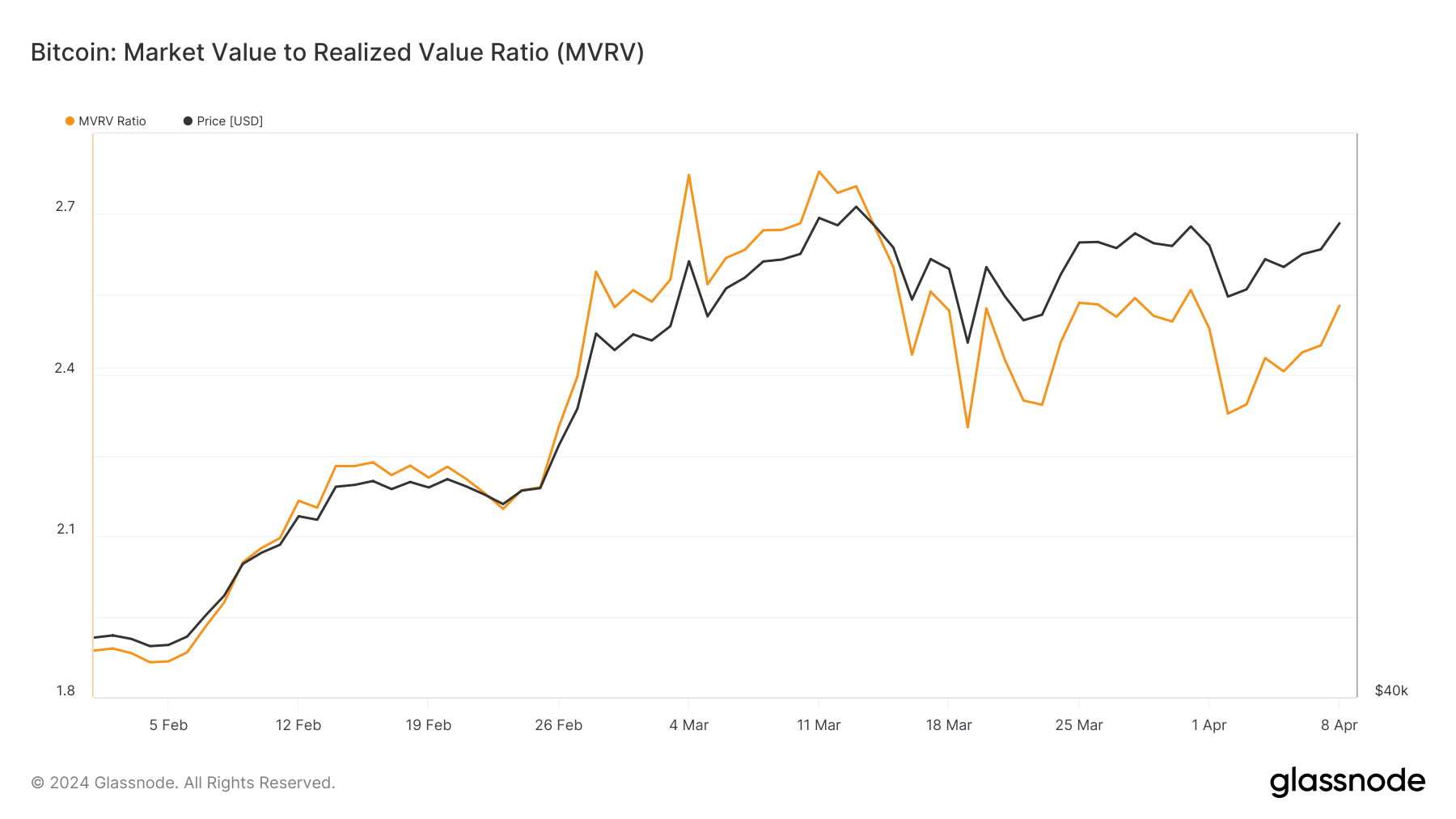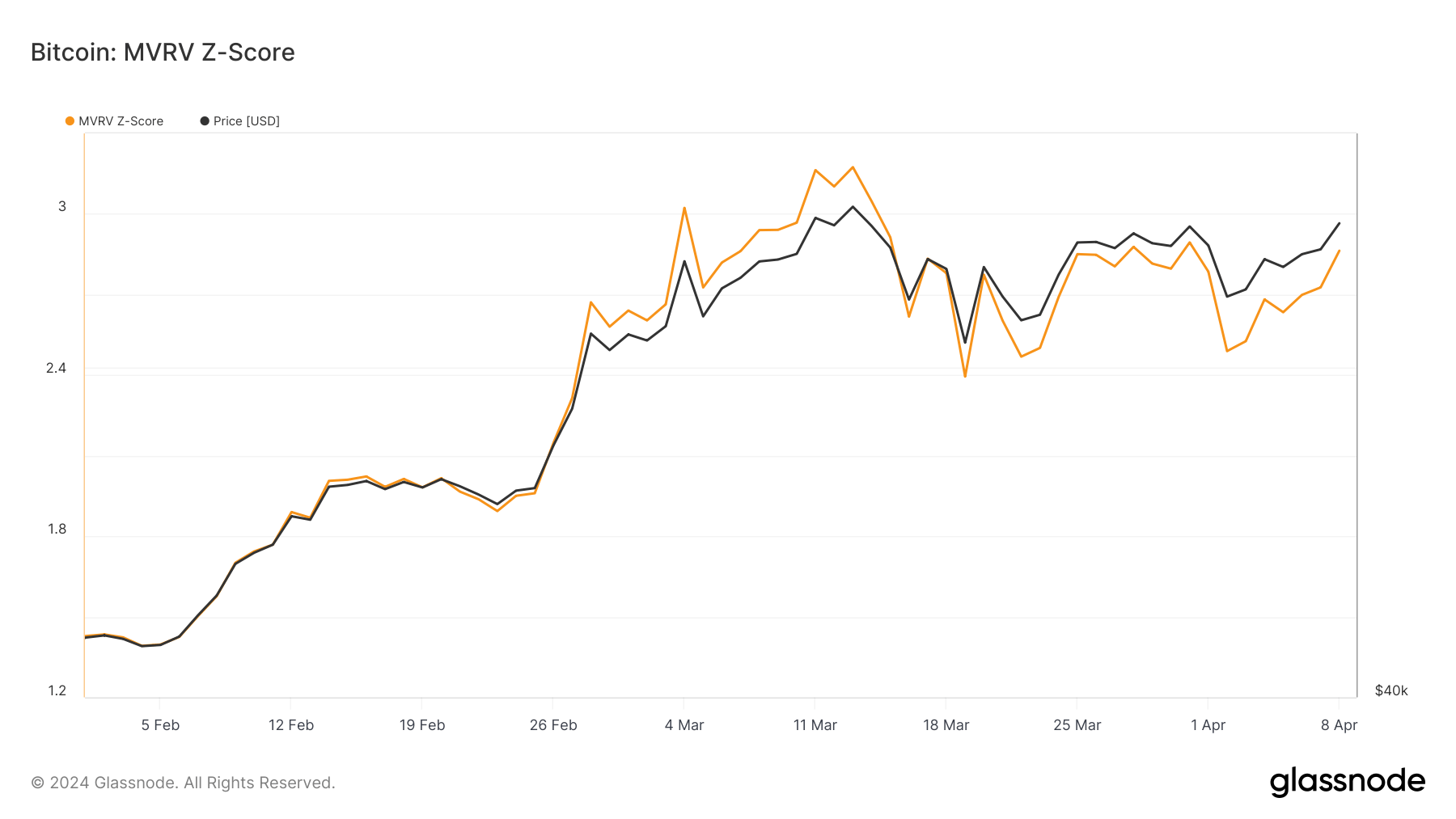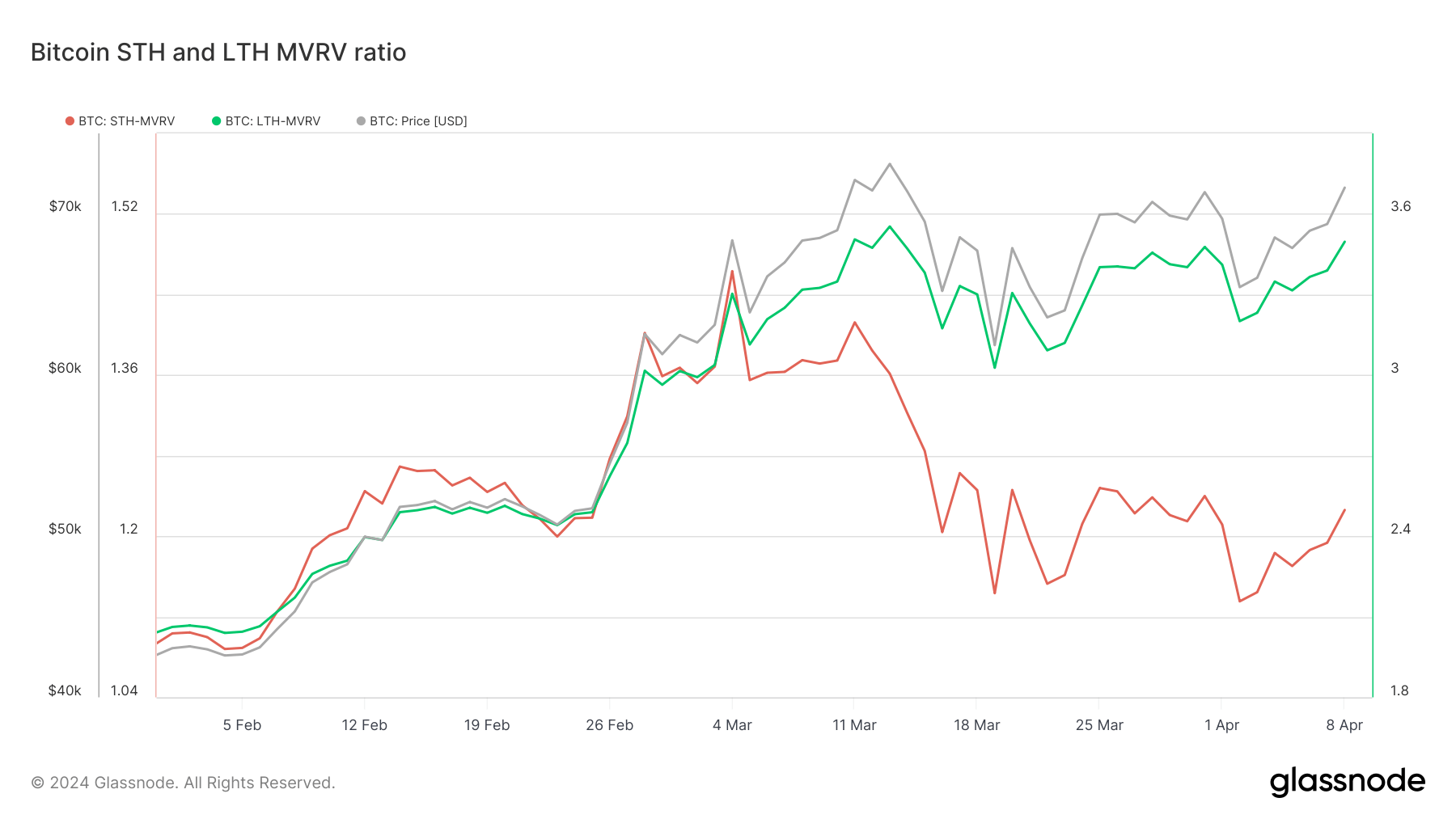The Market Worth to Realized Worth (MVRV) ratio is without doubt one of the most vital indicators for analyzing the Bitcoin market. It measures the ratio between the market cap (the present worth of Bitcoin multiplied by the full variety of cash in circulation) and the realized cap (the sum of the worth of all cash in circulation on the worth at which they had been final moved).
Whereas there are various makes use of for the MVRV ratio relying on which metric they’re analyzed with, it mainly offers perception into whether or not Bitcoin is undervalued or overvalued at any given time.
A better MVRV ratio signifies that the worth of Bitcoin is probably overvalued, because it signifies that the realized worth is greater than the market worth, that means that traders are holding unrealized income. The rise in unrealized positive aspects results in elevated promoting strain as a good portion of those traders want to make use of their income.
Conversely, a decrease MVRV ratio might point out an undervalued market with minimal promoting strain as traders usually are not holding on to unrealized income. This ratio turns into much more vital when utilized to long-term holders (LTH) and short-term holders (STH), because the distinction between their MVRV ratios can provide invaluable insights into market sentiment and future worth actions.
Evaluation of fromcrypto’s Glassnode information confirmed that modifications within the MVRV ratio mirrored the volatility of Bitcoin’s worth over the previous six weeks. The ratio fluctuated with the worth of Bitcoin, which peaked at $73,104 on March 18, adopted by volatility that noticed it modify to $61,000 earlier than settling above $71,600 on April 8. The MVRV ratio peaked at 2.751 on March 13 as effectively.

The MVRV Z-score ratio, which standardizes the MVRV ratio to determine extremes of market worth in comparison with realized worth, offers a clearer image of the connection between Bitcoin’s market capitalization and realized capitalization. With values peaking together with the MVRV ratio and the worth of Bitcoin, this reinforces the notion of potential overvaluation at these factors.
As each the final ratio and Z-score have declined considerably since their March 13 peak, this means a interval of elevated speculative exercise and profit-taking.

Delving deeper into the conduct of LTH and STH will assist us perceive which phase of the market skilled essentially the most unrealized revenue.
The LTH MVRV ratio has constantly been greater than the final MVRV ratio, indicating that long-term holders have skilled considerably greater unrealized positive aspects in comparison with the market common. That is significantly notable round March 13, when the LTH MVRV ratio reached 3.553, considerably greater than the final MVRV ratio of two.751.
The divergence means that long-term holders might have been in a powerful place to promote and take income, which may contribute to subsequent worth corrections. As of April 8, this disparity continues to be vital and reveals that the cohort’s realized worth is effectively under market worth.
Conversely, the STH MVRV ratio remained considerably decrease than the final MVRV ratio all through the interval, reflecting the truth that short-term holders had been both breaking even or had minimal unrealized positive aspects.
Whereas this may be interpreted as STHs having much less affect on market route, the cohort has seen constant accumulation over this cycle and is chargeable for growing buying and selling volumes. This reveals that regardless of their greater acquisition prices and decrease unrealized revenue, the sheer measurement of the cohort and the worth it creates definitely has a major influence in the marketplace.

Information from Glassnode confirmed that the elevated LTH MVRV ratio created the potential for elevated promoting strain throughout worth spikes as long-term traders unload their holdings at very enticing profit-taking ranges. Coupled with STH’s minimal unrealized positive aspects, this information means that the market is pushed primarily by the actions and sentiment of skilled traders, with short-term holders enjoying a extra reactive position.
Seeking to the long run, the noticed traits point out an elevated sensitivity to modifications within the long-term conduct of holders. If LTH continues to carry regardless of excessive unrealized positive aspects, it may sign robust perception in additional upside potential, probably stabilizing the market throughout the pullback.
Nonetheless, vital sell-offs by this group may result in sharp corrections, particularly if accompanied by a rising normal MVRV ratio and Z-score, indicating overvaluation.
The publish Bitcoin MVRV ratio reveals that LTHs are shifting the market whereas STHs are reacting appeared first on fromcrypto.
